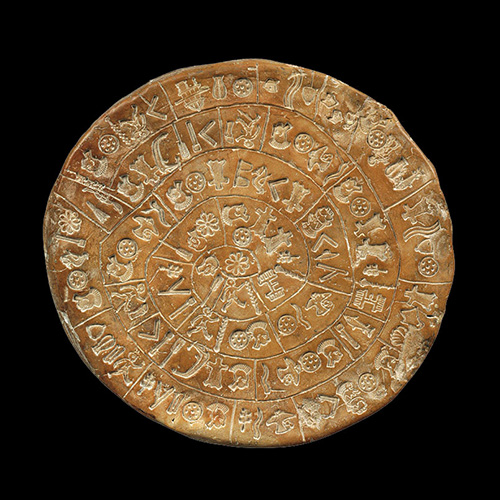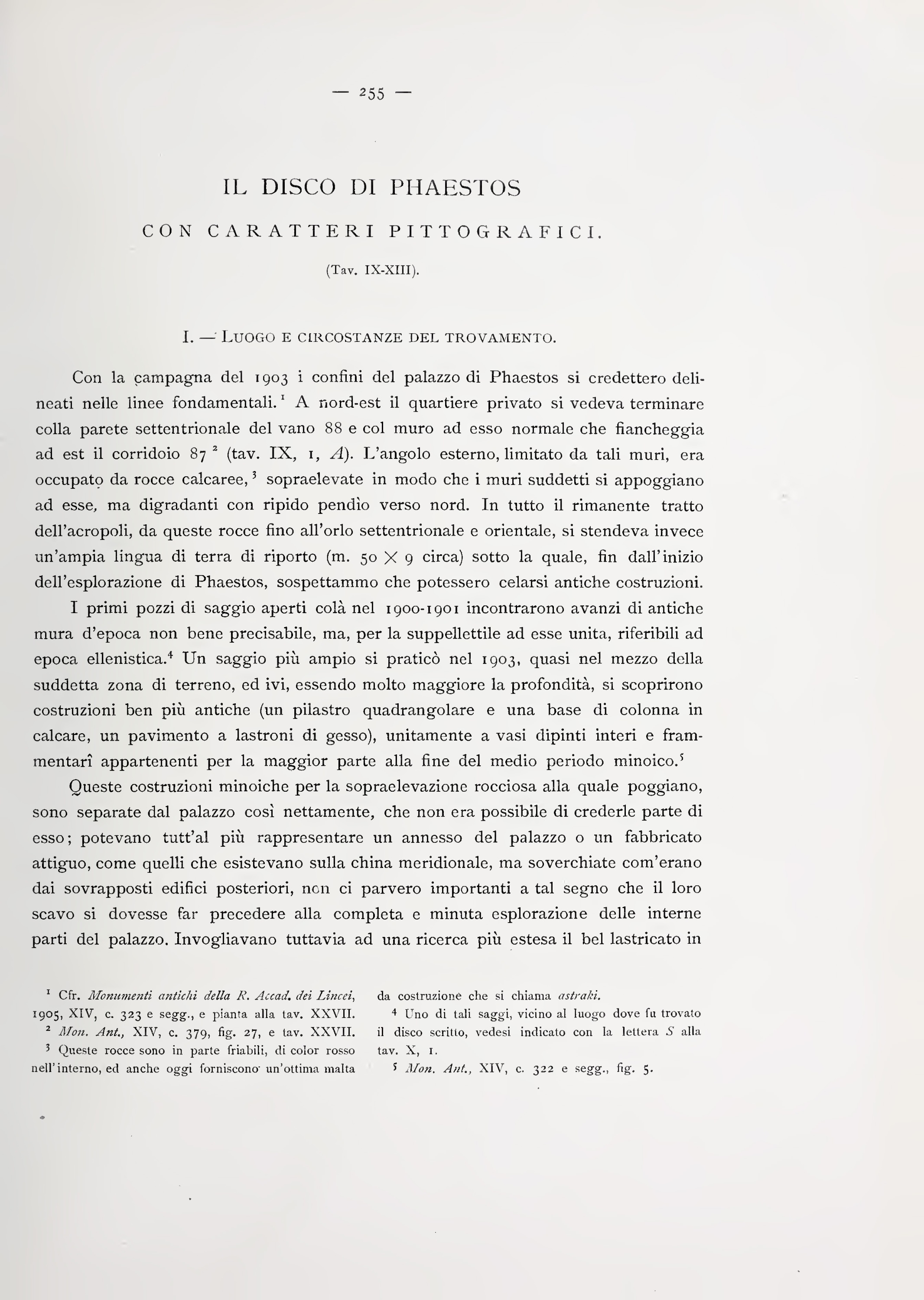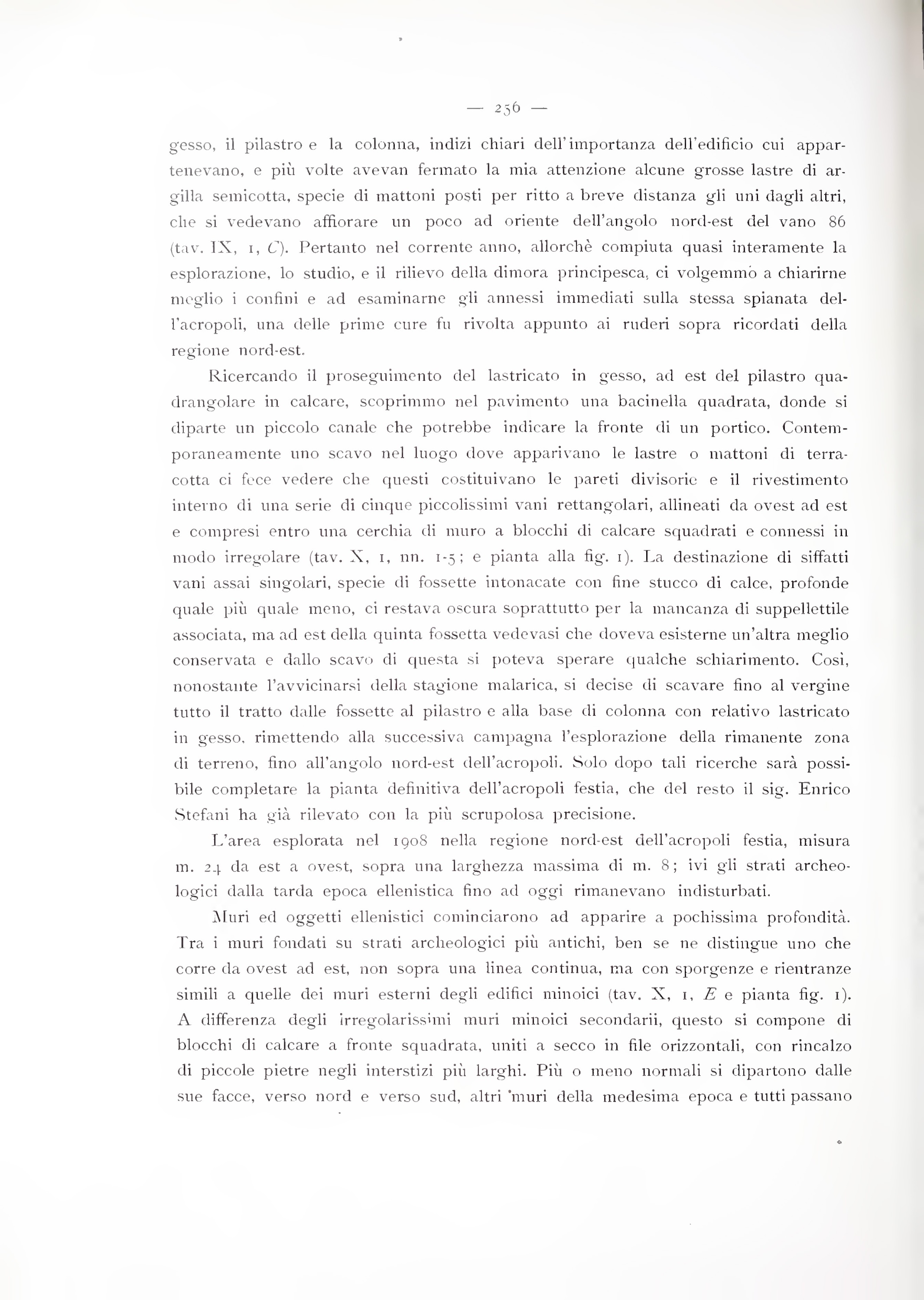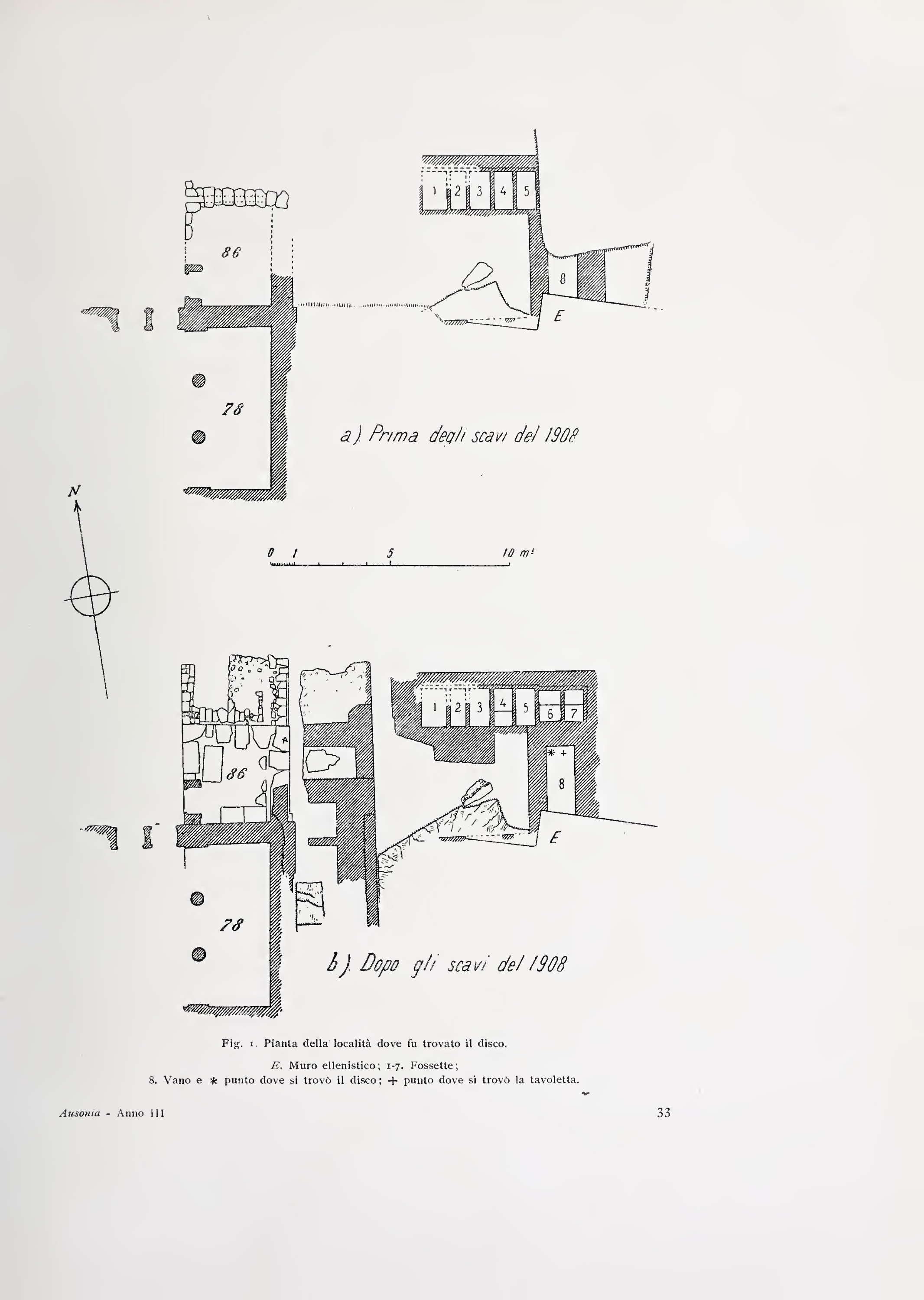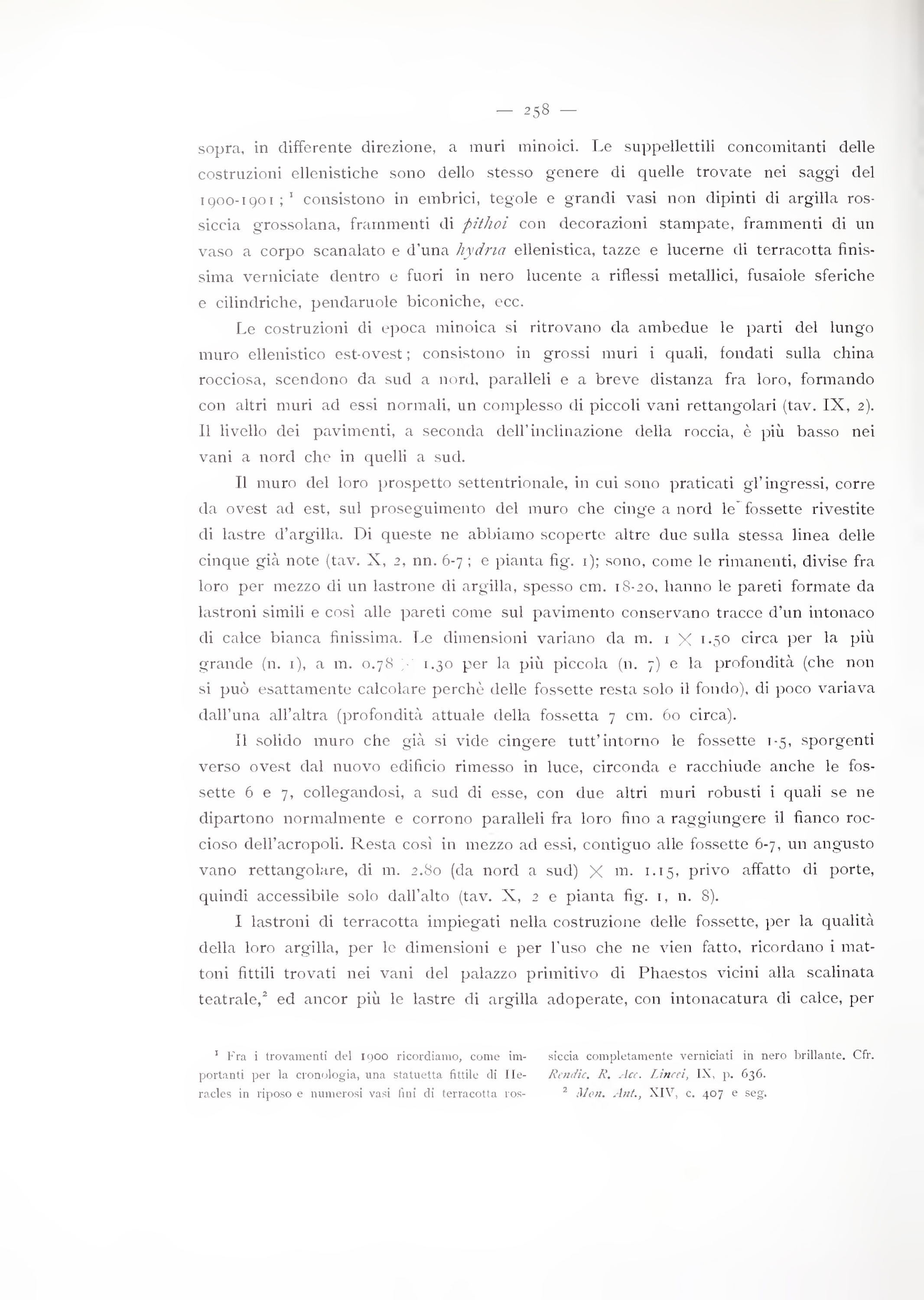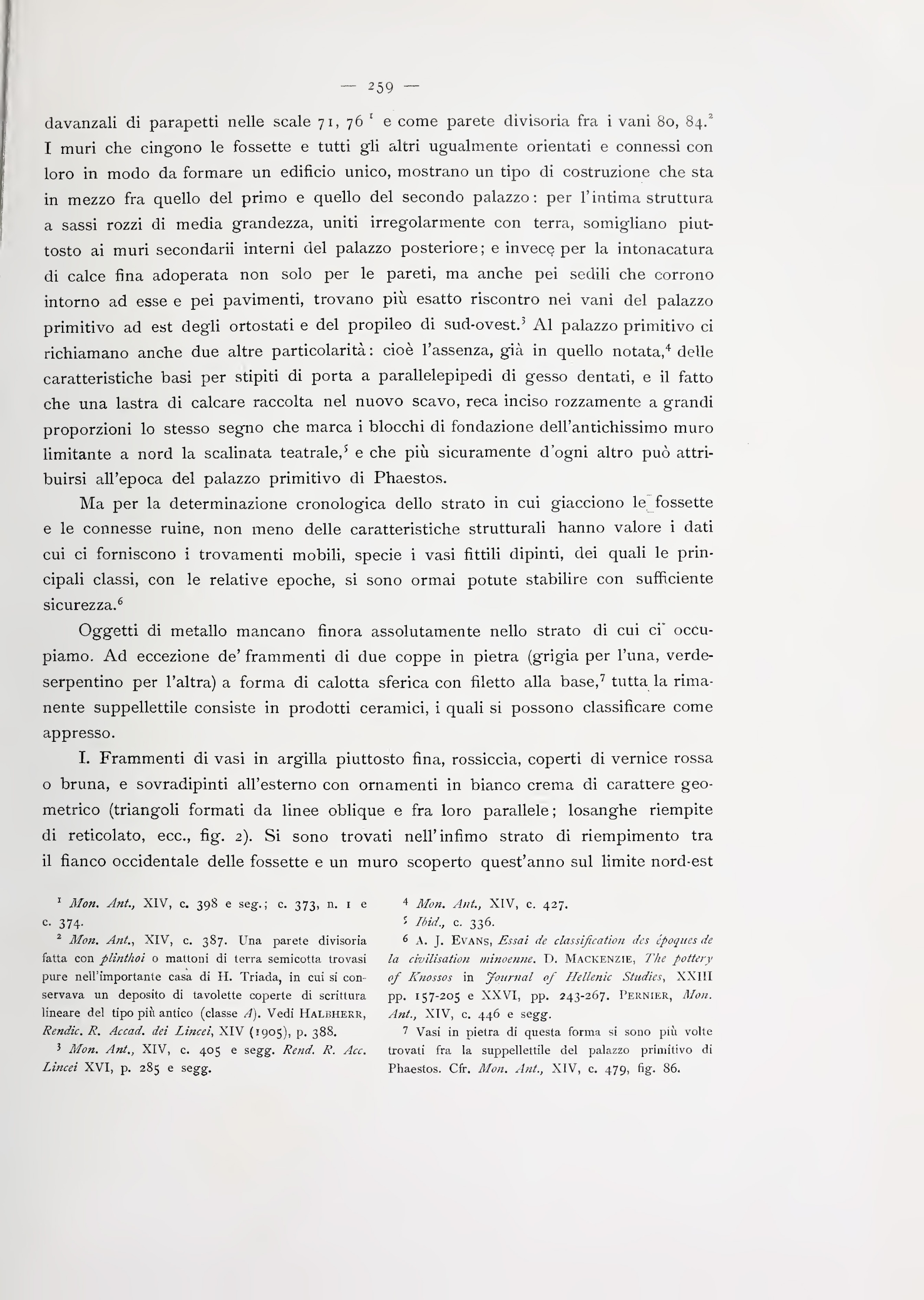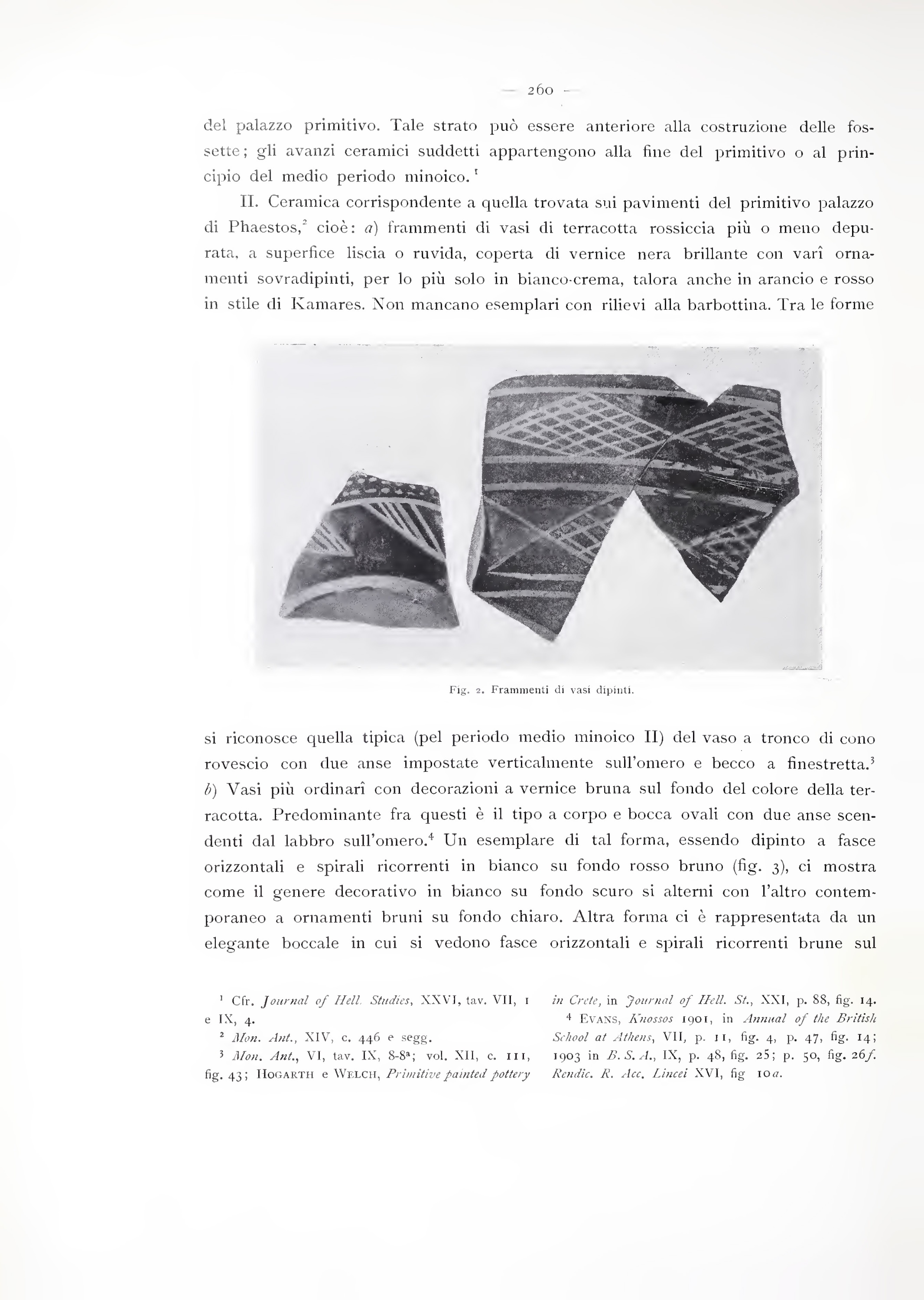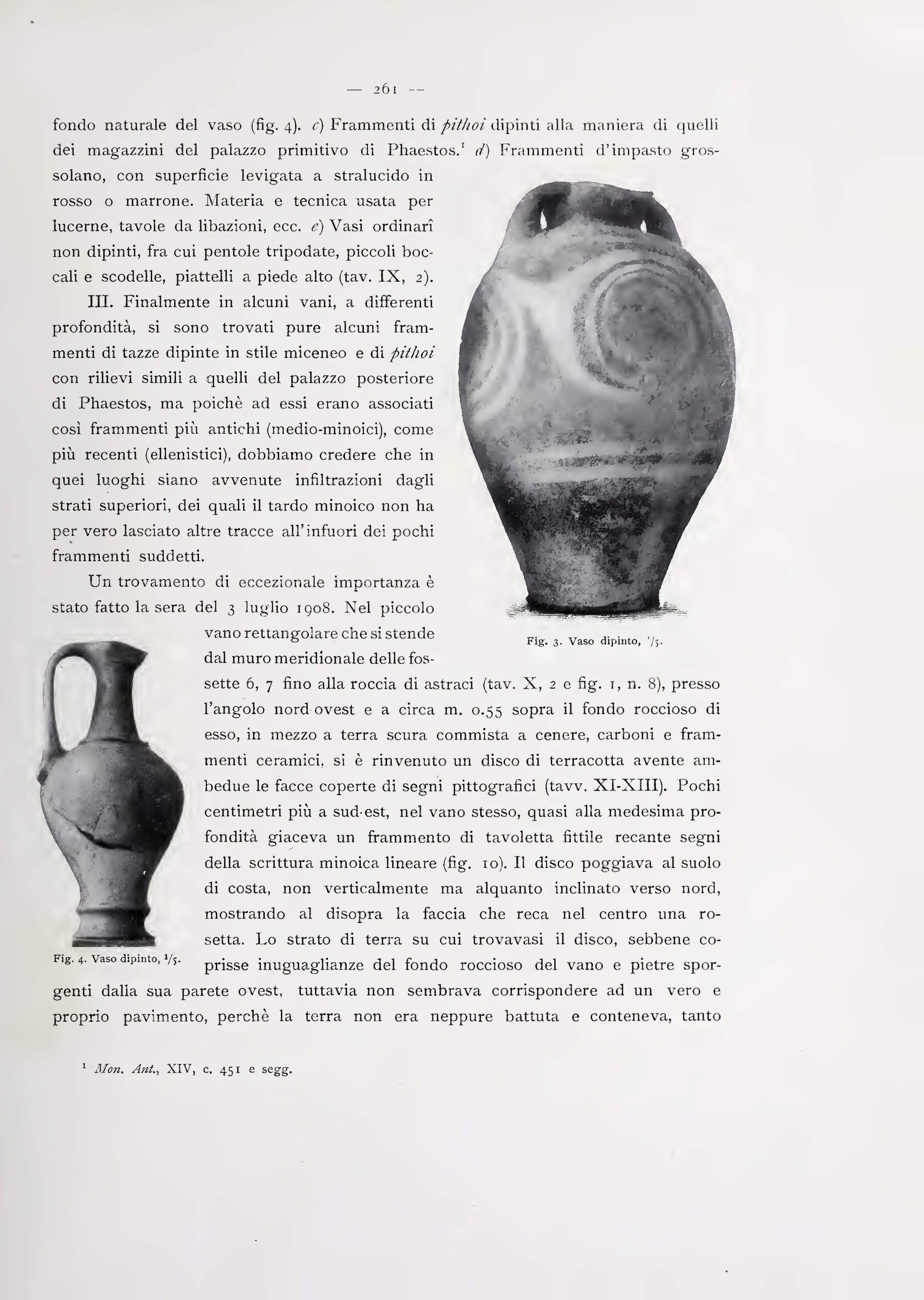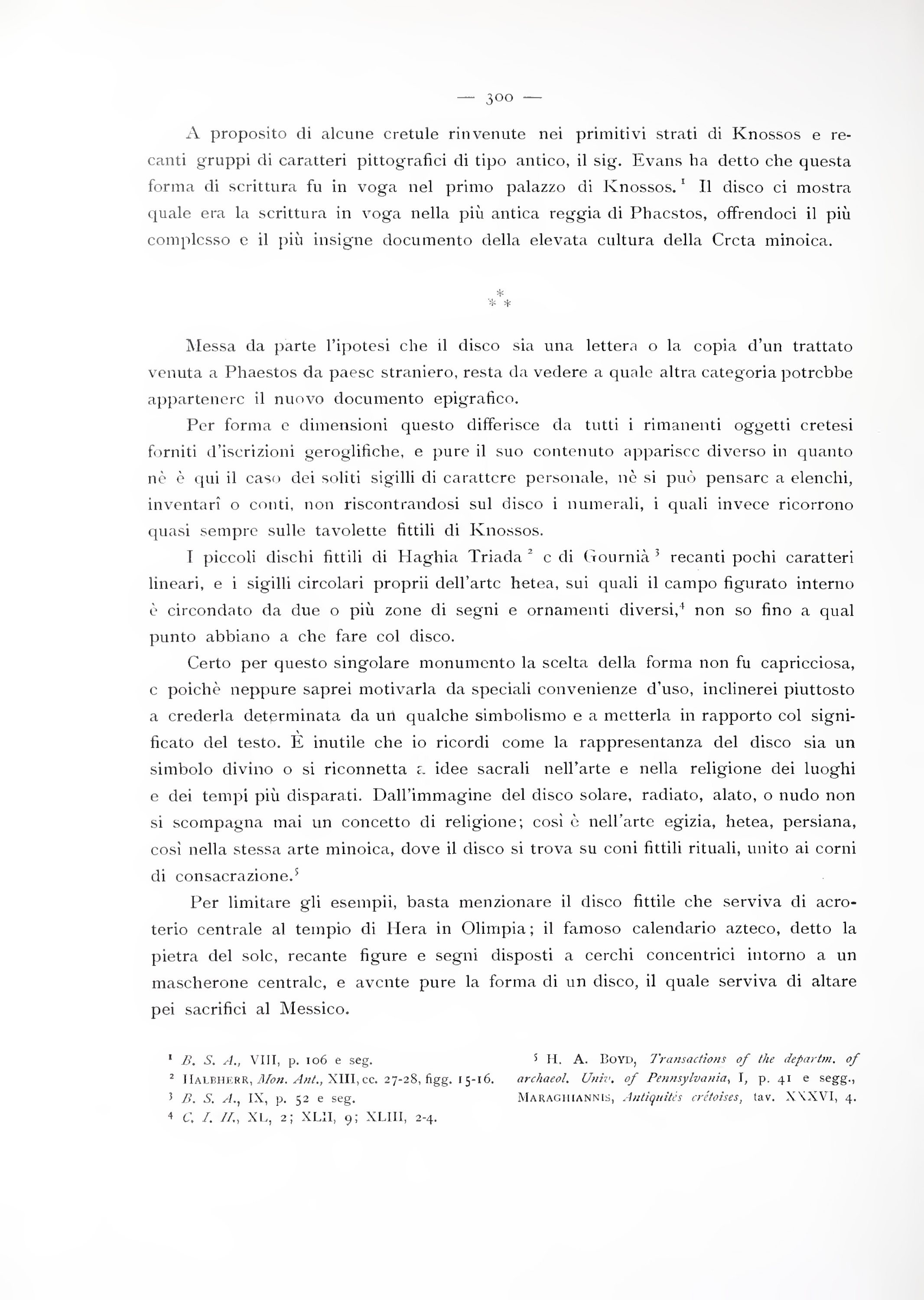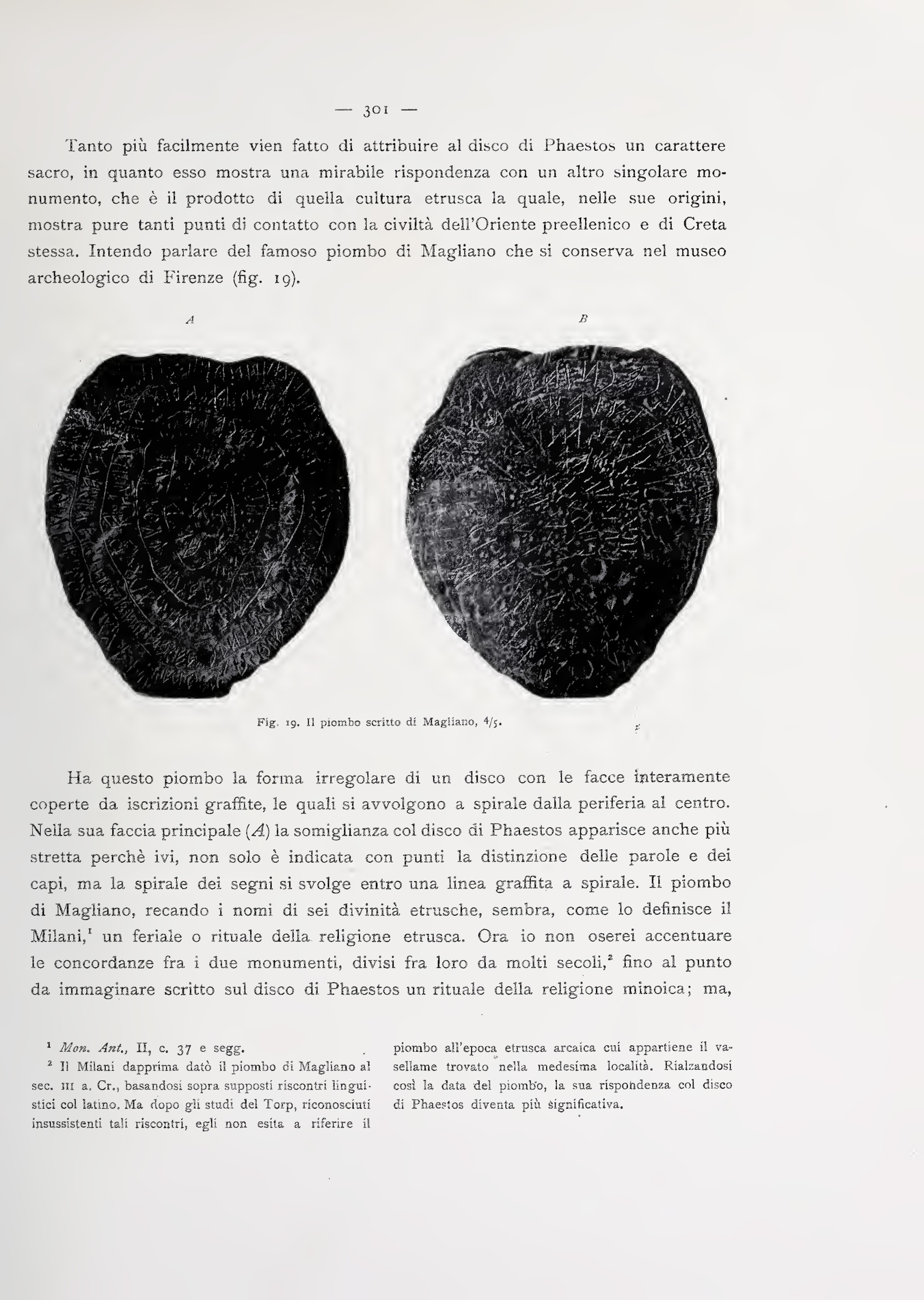About
Pernier's 1909 publication, in Italian, of his findings in Crete was the first recorded publication of an artifact known as The Phaistos Disk.
Source: OMNIKA
Access
Read for free
External sources
Primary
Myth
On Side A, the solar figure is first affirmed as the chief ruler. The author then asks for the figure to shine warmth and show its rays in order that the people can be assisted while sailing. On Side B, water is described as flowing westward to Iberia. An Iberian king's twenty daughters are described as watching (perhaps lamenting) the horizon as the sun is chased away by the other stars. Arrows are described as being shot, perhaps toward or from Sagittarius. Finally, the light drifts away to Asia and ascends again when the stars chase it back, ending the poem.
Belief system
Minoan culture refers to spiritual beliefs and customs practiced by peoples living in Crete and some Aegean islands between ca. 2800-1450 BCE.
Deity

The Minoan Solar Proto-Deity may represent the sun according to proto-myths in Linear A or Cretan Hieroglyphs. The figure may also be visible in Minoan material culture.
Translation
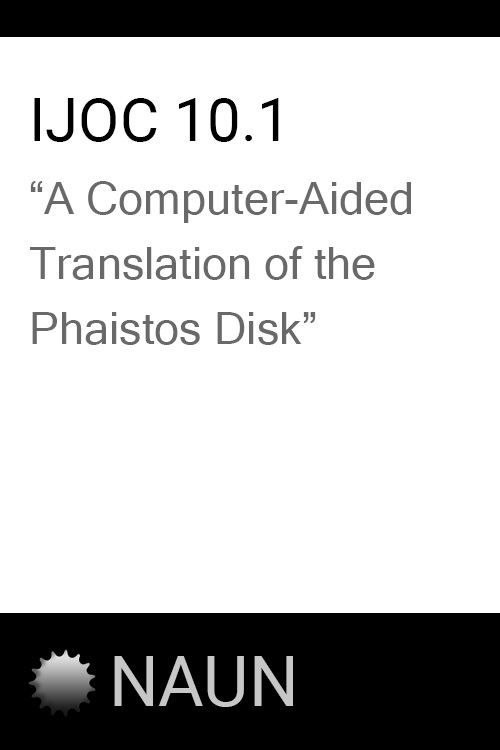
The "Minoan Sun Hymn" is an English translation of The Phaistos Disk in 2016 by Peter Z. Revesz. According to Revesz, the inscription on the Minoan artifact represents Cretan Hieroglyphs meant to be read from the inside-out. Moreover, the transliterated syllables may belong to the Proto-Hungarian or Proto-Finno-Ugric family of languages. According to Revesz's translation and transliteration, the inscription is a sun hymn, a form of proto-mythology, to a Minoan solar deity.
Myths cited
It looks like only the main myth was referenced in this work.
Belief systems cited
Artifacts cited
Contributor
Cite this work
ChicagoPernier, Luigi. "Il Disco di Phaestos con Caratteri Pittografici (Tav. IX-XIII)." Ausonia 3 (1909): 255-302.

